The Energy Problem Behind Trump’s Election
The energy problem behind Trump’s election is not the one people have been looking for. Instead, it is an energy problem that leads to low wages for many workers in the US, and high unemployment rates in the European Union. (The different outcomes reflect different minimum wage laws. Higher minimum wages tend to lead to higher unemployment rates; lower minimum wages tend to lead to higher employment, but unsatisfactory wages levels for many.) The energy problem is also reflected as low prices of oil and other commodities.
To try to solve energy problem, we use approaches that involve increasing complexity, including new technology and globalization. As we add more and more complexity, these approaches tend to work less and less well. In fact, they can become a problem in themselves, because they tend to redistribute wealth toward the top of the employment hierarchy, and they increase “overhead” for the economy as a whole.
In this material, I explain how inadequate energy supplies can appear as either low wages or as high prices. Basically, if energy supplies are inadequate, workers tend to be less productive because they have fewer or less advanced tools to work with. Their lower wages reflect lower productivity (Slide 20). Slide 6 offers some additional insights.
Trump’s election seems to reflect the cooling effect that our energy problems are having on the economy as a whole. Citizens are increasingly unhappy with their wage situation, and want a major change. Trump’s election may at least temporarily have a beneficial effect, since it may work in the direction of reducing complexity.
Long term, however, it is hard to see that the policies of any elected official will be able to fix our underlying energy problems.
I wrote up my post as a presentation. It can be downloaded at this link: The Energy Problem Behind Trump’s Election. I thought this might be a way of putting together quite a bit of material into one place. I have displayed the images of the PDF below the fold, for those who would like to read them as a post.
I hope the large number of images does not cause viewing problems. Let me know if you have suggestions for making this material more accessible.
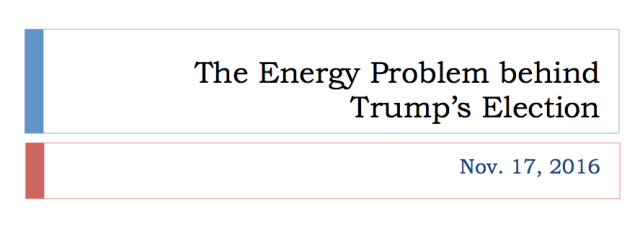
Slide 1
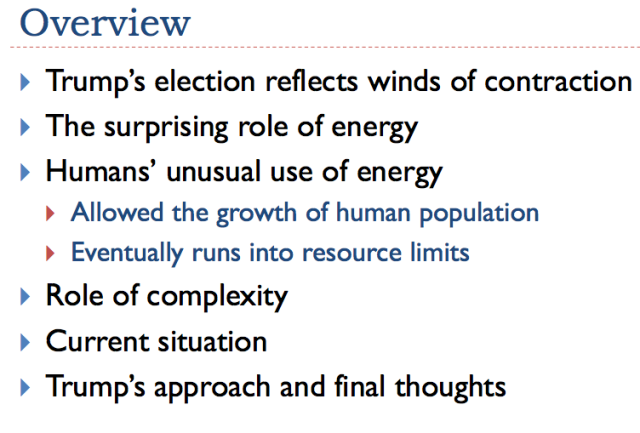
Slide 2
Section 1: Trump’s Election Reflects the Winds of Contraction
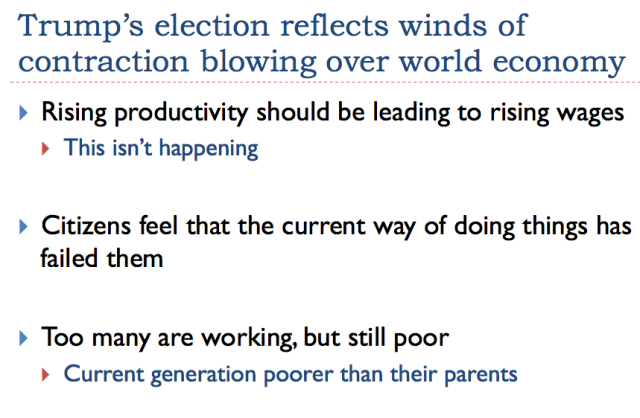
Slide 4
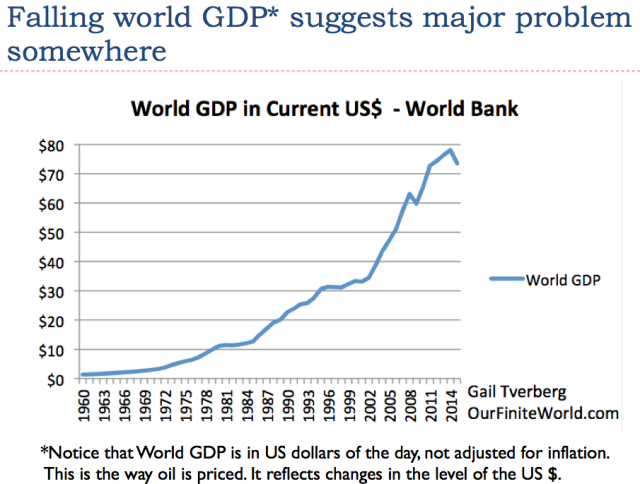
Slide 5
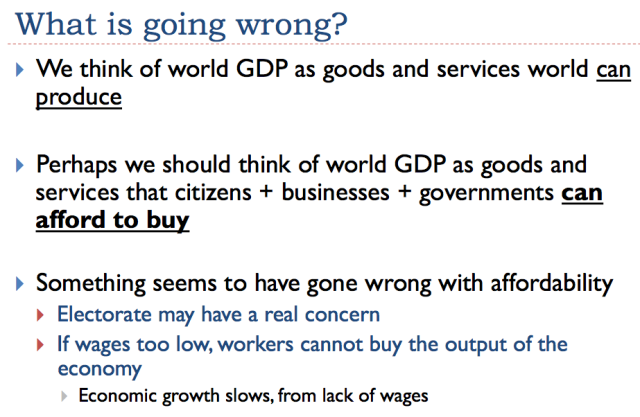
Slide 6
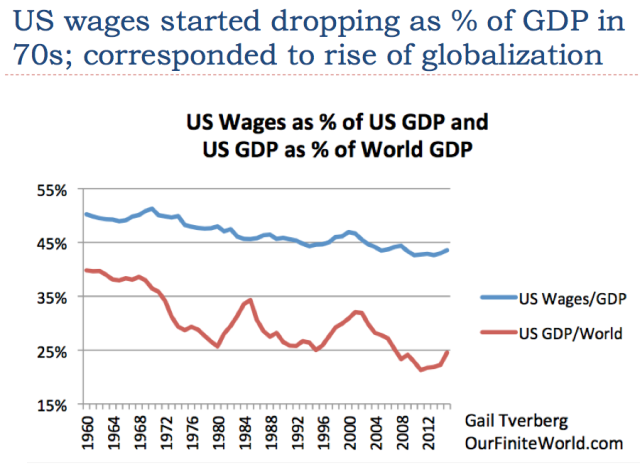
Slide 7

Slide 8

Slide 9
Section 2: The Surprising Role of Energy
Slide 11
Slide 12
Slide 13
Section 3: Humans’ Unusual Use of Energy
Slide 15
Slide 16
Slide 17
Slide 18
Slide 19
Slide 20
Section 4: The Role of Complexity
Slide 22
Slide 23
Slide 24
Slide 25
Slide 26
Slide 27
Slide 28
Slide 29
Slide 30
Slide 31
Slide 32
Slide 33
Slide 34
Slide 35
Section 5: Where we are now with respect to energy and the economy
Slide 37
Slide 38
Slide 39
Slide 40
Section 6: Trump’s Solution and Final Thoughts
Slide 42
Slide 43
Slide 44
Slide 45
Disclosure: None.

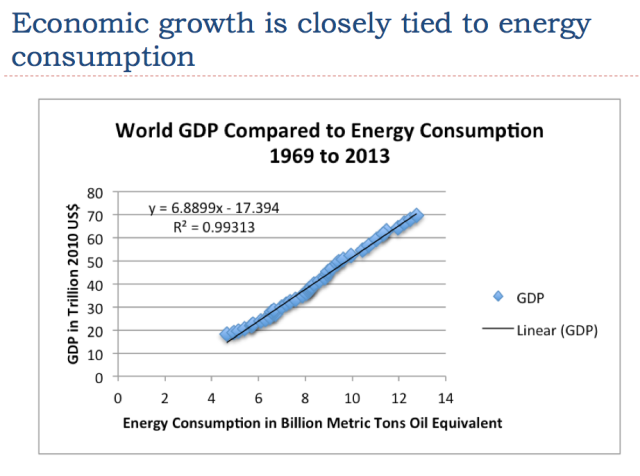
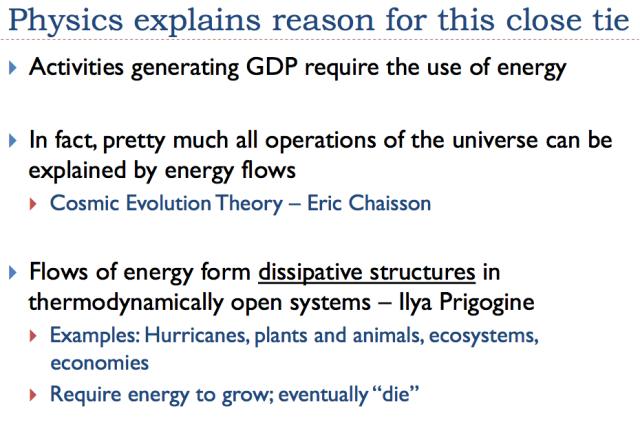
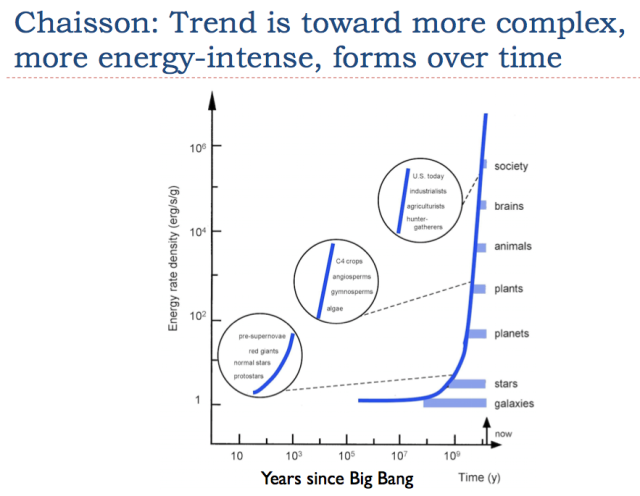
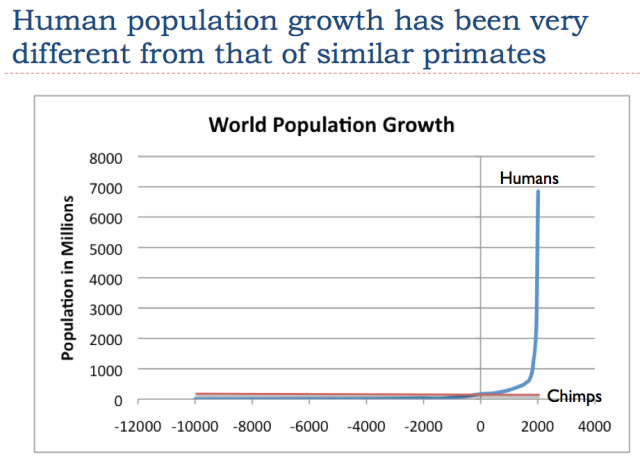
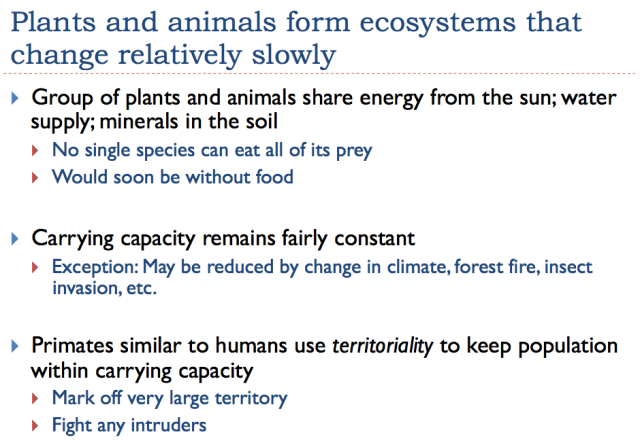

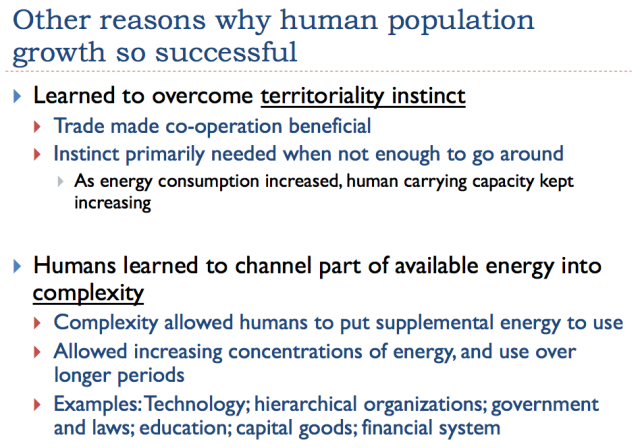
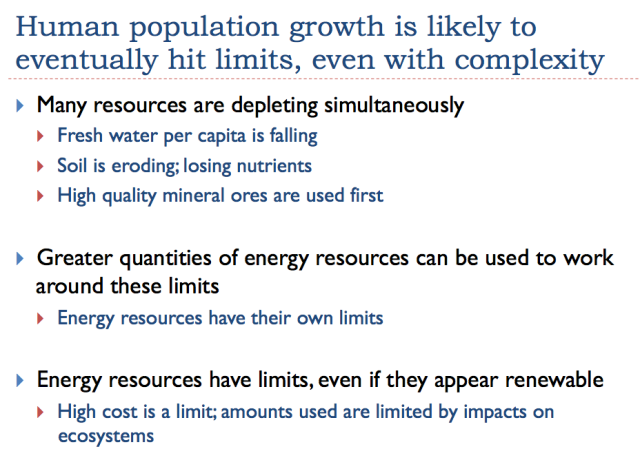
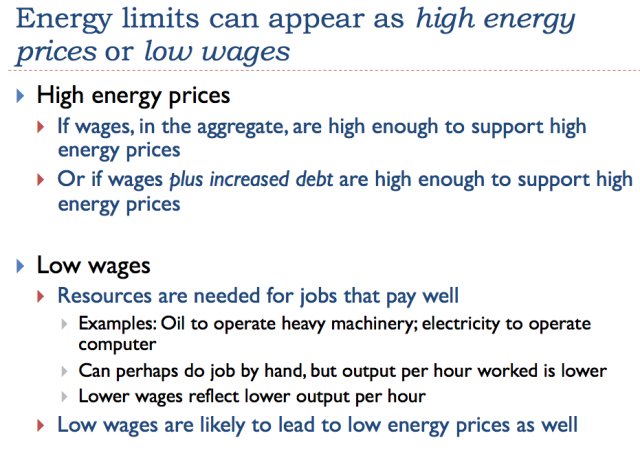
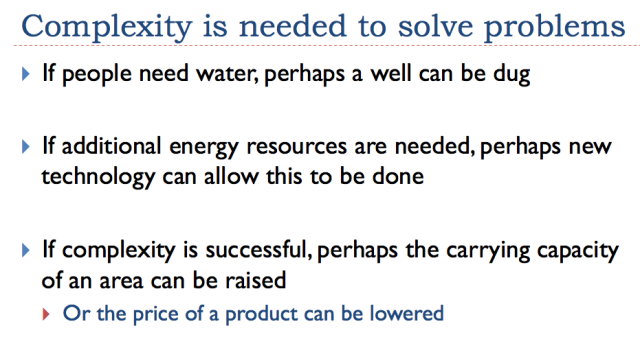
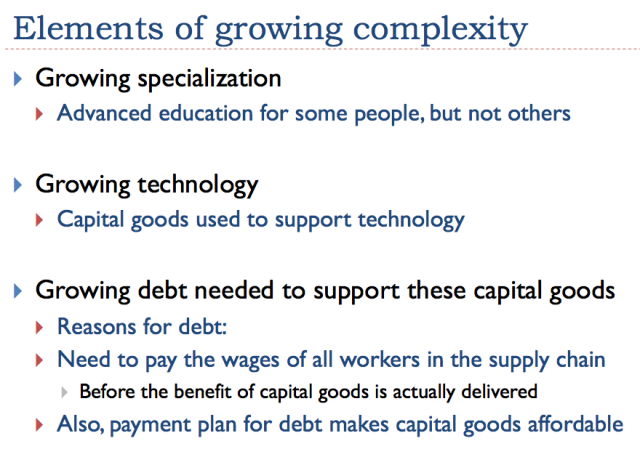

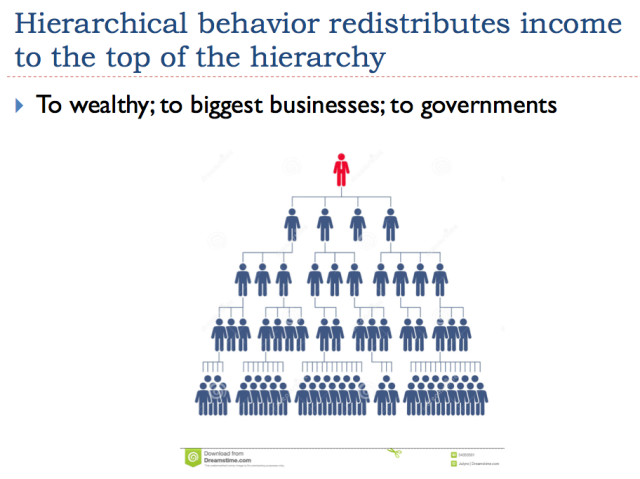
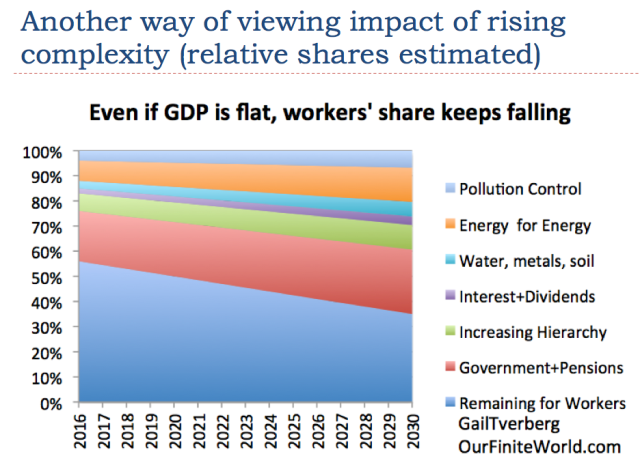

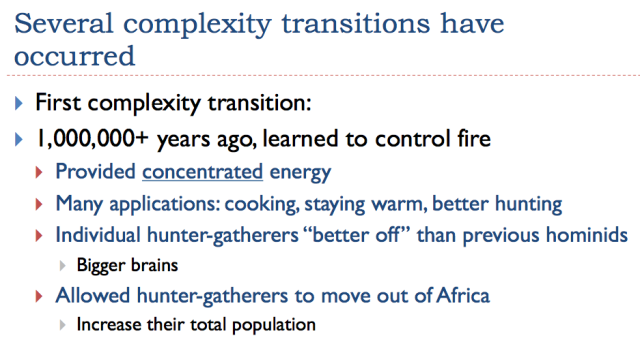

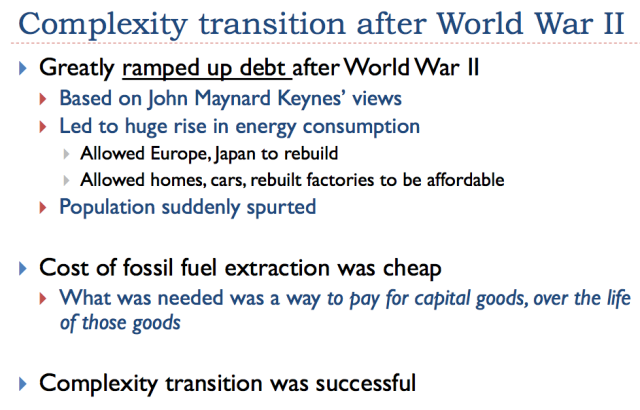
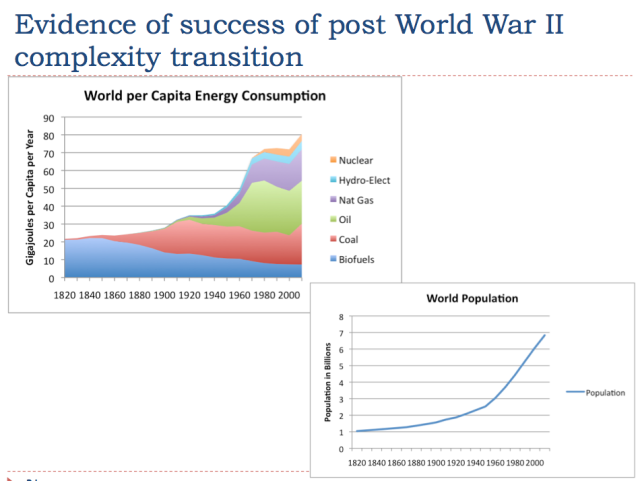
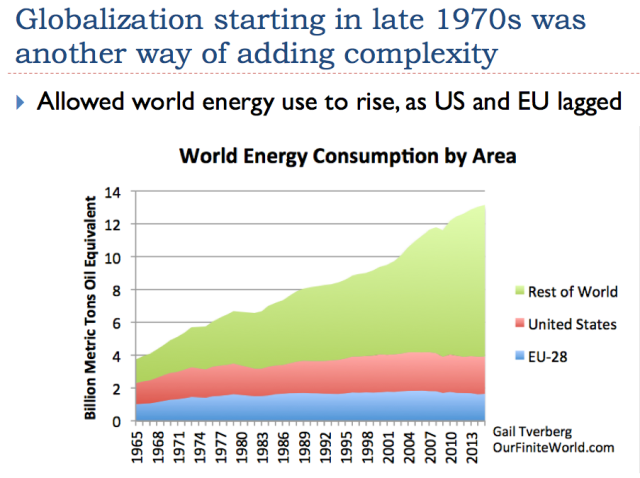
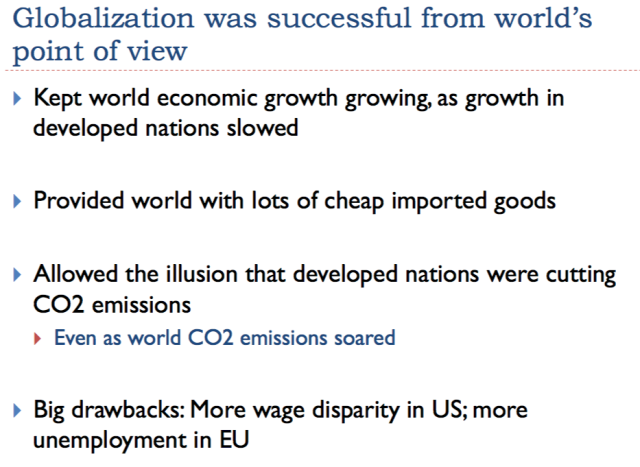
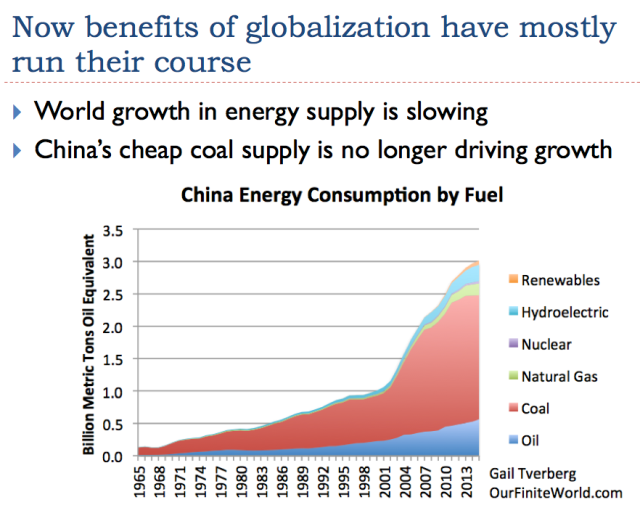
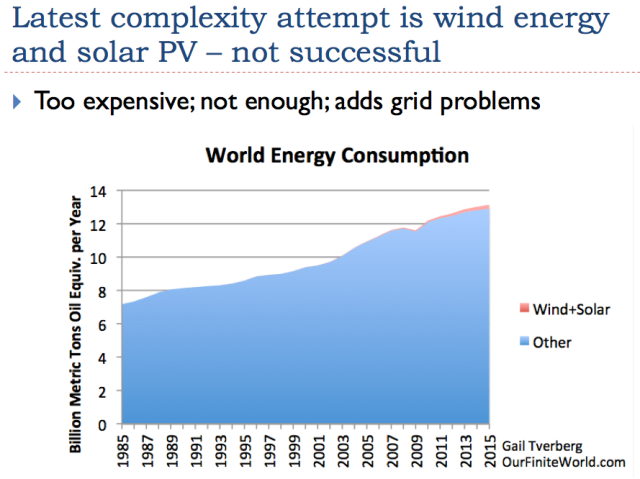
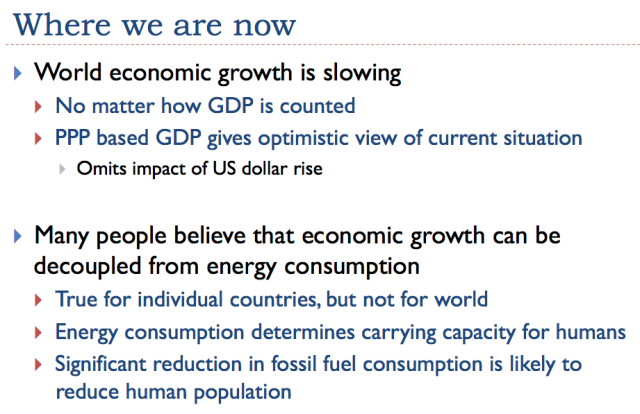

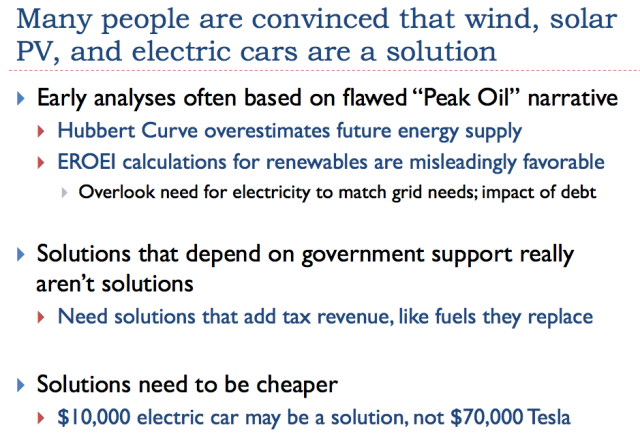
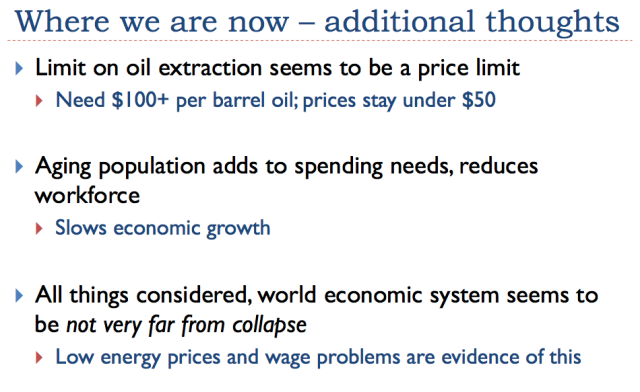
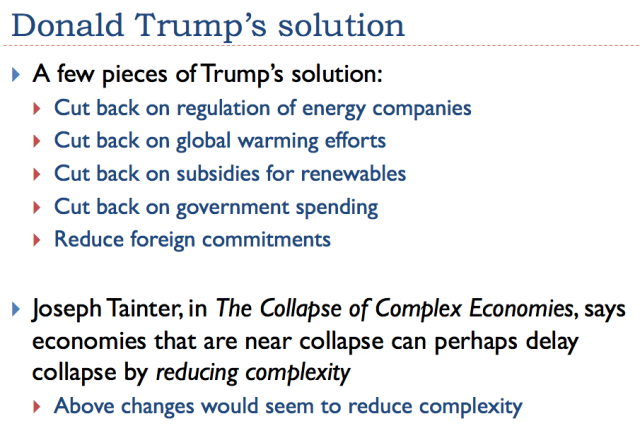
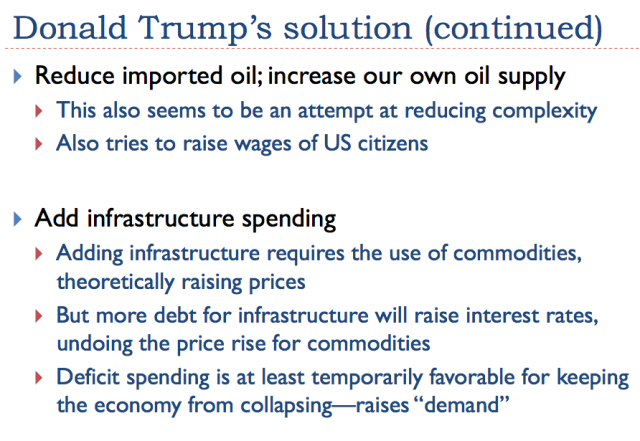
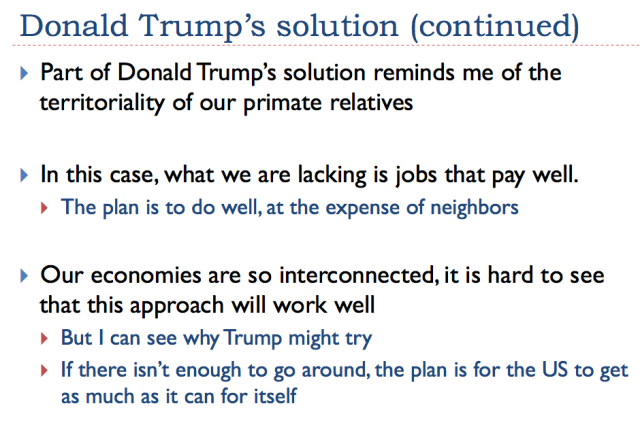




I agree that a widening of energy solutions are good. I also agree that cheap energy has been a big driver of our economy and has allowed the US to run massive deficits given oil prices are usually denominated in US dollars.
That said, the US faces headwinds in gradually rising energy costs and a strong driver for any other productivity growth besides maybe automation, although that will drive even more people out of work and require more educated individuals. That sad fact remains that there is more goods, services, and labor than is required which is a drain on the economy. Automation will make even more of everything and further increase labor over supply. Sadly we need demand but our current, now broken banking system with QE and massive amounts of debt makes it impossible for more demand and ability to service the growing deficits that come with more consumption.
The simple fact is nothing is simple in economics and that which looks straightforward often creates more dilemmas than they solve. The Federal Reserve needs to learn from its past mistakes quickly before they utterly destroy themselves and capitalism in America.
Despite slow growth in world GDP, I think that shifting to renewable energy is positive and that will provide economic stability. Considering that Renewable Energy is a Modern Sector, we can look to theories of Modern Sector Enlargement (MSE) and Modern Sector Enrichment (MSR). Both these theories address concerns of income inequality.
I think that we need both MSE and MSR to take place concurrently.
- MSR decreases income inequality making everyone better off; while
- MSE increases growth and increases inequality.
Together they can have a balanced growth path and create opportunities for new employment as well as less dependence on traditional (pollutive) forms of energy.
Spending on R&D in this industry will boost productivity of capital and labor, ultimately, resulting in equilibrium prices and quantities.
Lovely presentation, very informative and comprehensive!